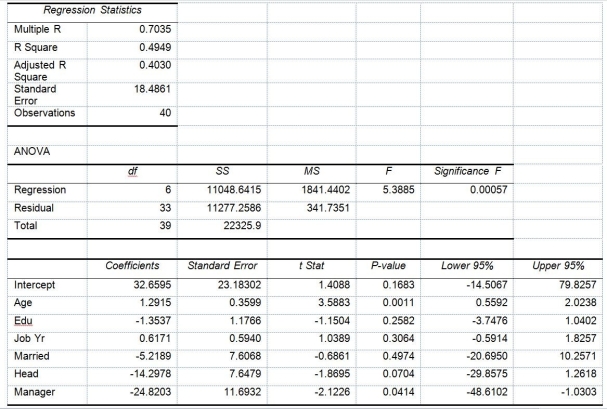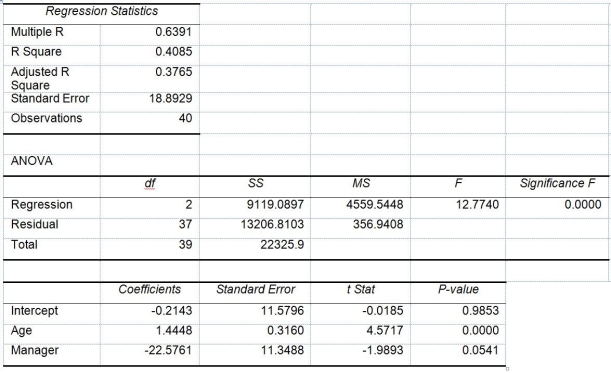TABLE 14-17


Model 2 is the regression analysis where the dependent variable is Unemploy and the independent variables are
Age and Manager. The results of the regression analysis are given below:

-Referring to Table 14-17 Model 1, which of the following is a correct statement?
Definitions:
Sender
In communication, the party who transmits a message to a receiver.
Noise
Any unwanted sound or a distraction that interferes with the communication process, affecting the clarity of the message being sent or received.
Communications Channels
The mediums through which information is transmitted from one party to another, including verbal, written, and digital platforms.
Distraction
An event or object that draws someone's attention away from the task at hand or their intended focus.
Q3: Referring to Table 17-8, construct an <img
Q8: Referring to Table 16-13, what is the
Q21: Referring to Table 14-1, for these data,
Q53: Referring to Table 16-1, set up a
Q71: Referring to Table 17-4, suppose the supervisor
Q83: Referring to Table 16-13, construct a scatter
Q92: Referring to Table 16-12, using the regression
Q110: The principle of parsimony indicates that the
Q145: Referring to Table 16-2, set up a
Q153: Referring to Table 13-13, the p-value of